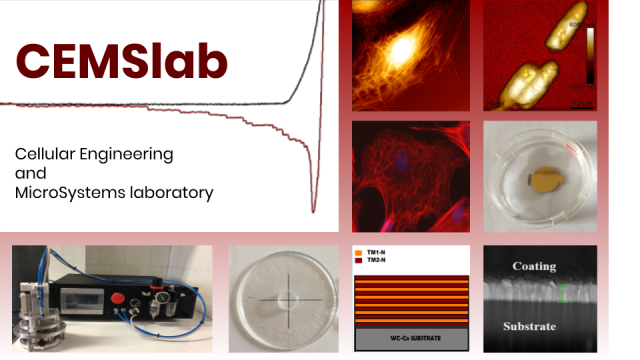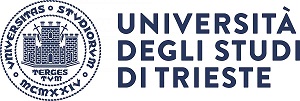Cellular Engineering and MicroSystems laboratory (CEMSlab) group is a research team based at the University of Trieste. We are a multidisciplinary group, currently composed by our mentor and supervisor, Prof. Orfeo Sbaizero, three post docs, one PhD student, and other external collaborators.
Starting from our robust foundations in materials science and engineering, we successfully developed several research lines, ranging from basic science to the development of solutions for industries.
We have a strong expertise in biomechanics: by using the atomic force microscope, we have characterized the mechanical behavior of mammalian cells in health and disease. Over the years, our work has contributed in shedding light on common and rare disorders, like dilated cardiomyopathy or Hutchinson-Gilford progeria syndrome.
More recently, we have moved part of our efforts to the study of bio-sensing methods enabling the detection of bacterial biofilms in early stage of formation and we were able to perform a real-time biofilm monitoring. In particular, we exploited the quartz crystal microbalance to investigate the development of bacterial biofilms and the efficacy of disinfection treatments, by observing both mass and viscoelastic changes. We developed a know-how that is leading to the design of a new sensing system based on micro-resonators for industrial applications.
As already mentioned, we have never abandoned our “engineering” attitude and we always proposed ourselves as a connection between science and industry. In collaboration with companies, we developed several prototypes, mainly devices that can be used in biotech companies for in vitro studies. One of our latest releases is the cell stretcher, a device that can apply a mechanical stretch to cell populations, thus mimicking certain phenomena that occurs in the body (e.g. the heart beating). We also deal with more pragmatic issues, and we try to use our expertise to help local businesses. Indeed, we are currently studying and developing nanostructured, ceramic coatings to strengthen cutting tools, commonly used in wood industries and fortunately suffering from wear phenomena.
We are always looking for new challenges and new people to enrich our research adventure.

Top, from left to right: AFM images of mammalian cells and bacteria Middle left: immunostaining of mammalian cells (red: F-actin, blue: DAPI) Middle right: one of the quartz used for QCM experiments. Bottom, from left to right: our prototype of cell stretcher; polymeric membranes used with our cell stretcher; sketch of multilayered structure for nanostructured coatings; SEM image of nanostructured coating.
CONTACTS
Orfeo Sbaizero
Department of Engineering and Architecture
University of Trieste![]() sbaizero@units.it
sbaizero@units.it
Last updated on: 06/11/2020 - 15:10

